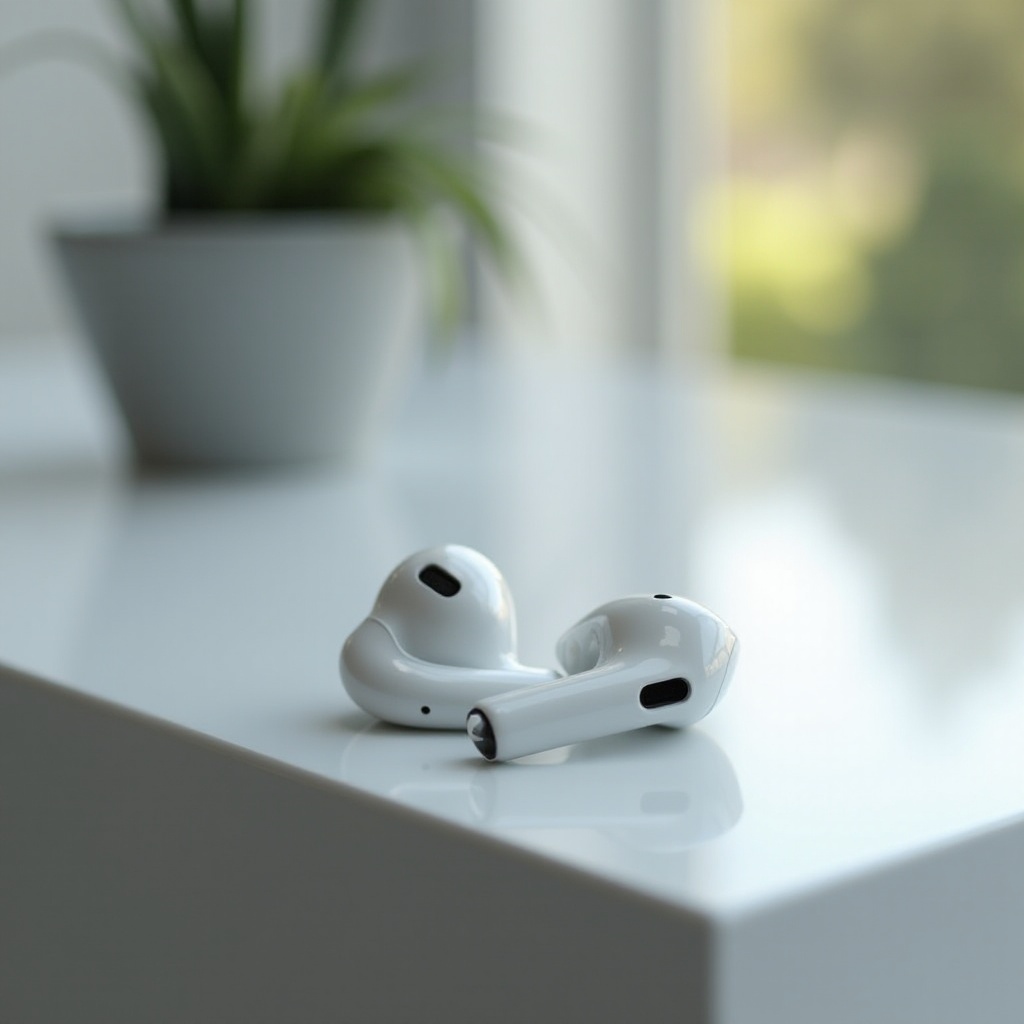How to Make AirPods Sound Better
Introduction
If your AirPods aren't delivering the immersive audio experience you expect, you're not alone. Many users seek ways to improve the sound quality of their beloved wireless earbuds. Enhancing your AirPods' sound quality involves a combination of hardware adjustments, software updates, and routine maintenance. This guide covers practical tips and tricks to ensure you get the best audio performance from your AirPods.

Proper Ear Fit and Seal
A critical factor in determining sound quality is the fit of your AirPods. A proper fit ensures a good seal, which is crucial for effective sound isolation and bass response. Here's how to achieve it:
- Try Different Ear Tips: AirPods Pro come with small, medium, and large ear tips. Experiment with each size to find the best fit for your ears.
- Ear Tip Fit Test: Use the Ear Tip Fit Test feature available in the iOS settings. It helps you determine whether you have the right seal for optimal sound quality.
- Wear them Correctly: Ensure that your AirPods are angled correctly in your ears. This can make a significant difference in sound and comfort.
- Consider Foam Tips: For a better fit, try third-party foam tips. They conform to the shape of your ear canal, providing a superior seal.
An appropriate fit not only improves sound quality but also enhances comfort during extended listening sessions.
Updating Firmware and Software
Keeping your AirPods updated ensures you benefit from the latest enhancements that Apple provides. These updates can improve sound quality and resolve existing issues. Here's how to ensure your firmware is up to date:
- Automatic Updates: AirPods automatically update their firmware when connected to your iPhone. Make sure your iPhone has the latest iOS version to facilitate this.
- Manual Check: Navigate to the Bluetooth settings on your iPhone, find your AirPods, and check the firmware version. Compare with the latest version available online to ensure it's up-to-date.
- Software Updates: Regularly update your iPhone or iPad to the latest iOS version. Each update can include optimizations for connected devices like your AirPods.
Firmware and software updates can significantly enhance audio performance, fixing bugs and introducing new sound features.
Optimizing Audio Settings on Apple Devices
Tweaking audio settings on your Apple device can make a substantial impact on your listening experience. Follow these steps for optimal settings:
- Enable Noise Cancellation (AirPods Pro): Activate this feature in the Control Center or via the AirPods settings on your iPhone. Noise cancellation reduces external sounds, ensuring a clearer listening experience.
- Adjust EQ Settings: Navigate to the Music settings and experiment with different EQ presets like Bass Booster, Treble Booster, or Acoustic, depending on your preference.
- Volume Limit: Ensure your device's volume limit is set to an appropriate level. Go to Settings > Music > Volume Limit and adjust as necessary.
- Sound Check: Enable Sound Check in the Music settings to normalize the volume across all your songs, preventing sudden sound spikes.
These adjustments can help tailor the audio output to your liking, enhancing the overall quality of your AirPods listening experience.

Regular Cleaning and Maintenance
Maintaining your AirPods ensures they continue to deliver high-quality sound. Over time, earwax and debris can clog the speaker grills, affecting performance. Follow these cleaning tips:
- Use a Soft, Dry Cloth: Gently wipe the exterior of the AirPods with a lint-free cloth.
- Clean the Speaker Grills: Use a dry cotton swab or a small, soft-bristled brush to remove debris from the speaker grills.
- Avoid Moisture: Keep your AirPods away from liquids, and never use water or cleaning solutions.
- Check the Charging Case: Ensure the charging case is clean and free from debris, as this can affect charging efficiency.
By regularly cleaning your AirPods, you can prevent sound quality from deteriorating over time due to blockages or dirt.

Using Third-Party Apps and Tweaks
To further enhance the sound quality, consider third-party apps and settings adjustments. These tools can provide greater control over audio output:
- Boom 3D: This app offers advanced equalizer settings and 3D sound technology, allowing you to fine-tune the audio experience.
- EQ Apps: There are several equalizer apps available for iOS, such as Equalizer+ and Flacbox, which enable detailed adjustments to bass, mid, and treble frequencies.
- Volume Boost Apps: Apps like AmpMe or Volume Booster can increase the volume and improve clarity.
Use these apps and tweaks to customize the audio output and enhance your listening experience beyond the default settings provided by Apple.
Checking and Adjusting Sound Balance
Sound balance, or stereo balance, can impact how music and audio are perceived in each ear. Here's how to check and adjust it:
- Access Audio/Visual Settings: Go to Settings > Accessibility > Audio/Visual.
- Balance Control: Adjust the balance slider to ensure the audio output is centered. This helps in achieving a balanced mix of sound between both ears.
- Check for Blockages: If one AirPod sounds quieter, ensure it's clean and not blocked.
Proper sound balance ensures each ear receives equal audio levels, contributing to a better overall listening experience.
Managing Battery Health
Healthy battery life also contributes to maintaining sound quality. Follow these tips to manage your AirPods battery health:
- Avoid Extreme Temperatures: Keep your AirPods and charging case within the recommended temperature range to prevent battery degradation.
- Regular Charging: Don't let your AirPods fully discharge frequently. Regularly charging them from moderate levels helps sustain battery health.
Proper battery management ensures that your AirPods perform optimally, providing consistent, high-quality sound.
Conclusion
Improving the sound quality of your AirPods involves a combination of finding the perfect fit, keeping software updated, tweaking audio settings, regular cleaning, and using third-party apps. By following these guidelines, you can significantly enhance your AirPods' audio performance, ensuring a premium listening experience every time.
Frequently Asked Questions
Why do my AirPods sound muffled?
Muffled sound can result from dirt and earwax clogging the speaker grills. Regular cleaning of the AirPods and ensuring a proper fit can alleviate this issue.
How often should I clean my AirPods?
It's recommended to clean your AirPods every few weeks to prevent dirt and debris build-up, which can affect sound quality.
Can I use third-party ear tips with AirPods for better sound?
Yes, third-party ear tips, especially foam tips, can offer a better fit and seal, thereby enhancing sound quality and comfort.



